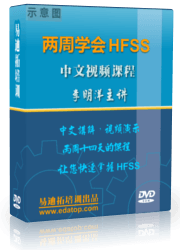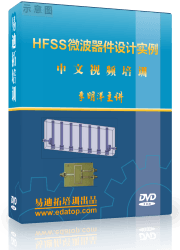- 易迪拓培训,专注于微波、射频、天线设计工程师的培养
HFSS15: Custom Arrays
Once you have imported the array factor information from a text file, HFSS uses (eq. 8) to compute the array factor. When a custom array is defined, no scan direction is set and the array factor phase weights are those specified on an element-by-element basis in the geometry file.
The text file must have the following format. Coordinate values are assumed to be model units, and phase and amplitude are in SI units (radians and volts respectively):
N
x_1 y_1 z_1 A_1 P_1
x_2 y_2 z_2 A_2 P_2
...
...
x_N y_N z_N A_N P_N
where
• x_1 is the x-coordinate position of the first element.
• y_1 is the y-coordinate position of the first element.
• z_1 is the y-coordinate position of the first element.
• A_1 is the amplitude weight of the first element. Amplitude references voltage.
• P_1 is the phase weight for the first element. Phase references radians.
Following is an example of a square 3 x 3 custom array geometry defined in a text file. The array elements are uniformly weighted and separated from one another in the x- and y-directions by 0.6729 user units.
! first line is a count of cells
9
! then [x,y,z] position of each cell
! and amplitude and phase
! default units for position are model units
! default units for amplitude is Volts
! default units for phase is radians
0 0 0 64.04mV 0
10cm 0 0 184.97mv 30deg
20 0 0 394.87mv 60deg
0 10 0 696.36mv 0
10 10 0 1.066 30deg
20 10 0 1.459 60deg
0 20 0 1.808 0
10 20 0 2.051 30deg
20 20 0 64.04mv 60deg
The information will appear as follows in the Custom Array Definition window:









 沪公网安备 31011202014168号
沪公网安备 31011202014168号
 1427313829
1427313829 旺旺在线
旺旺在线 Skype Online
Skype Online 13761612886
13761612886 官方淘宝店
官方淘宝店
